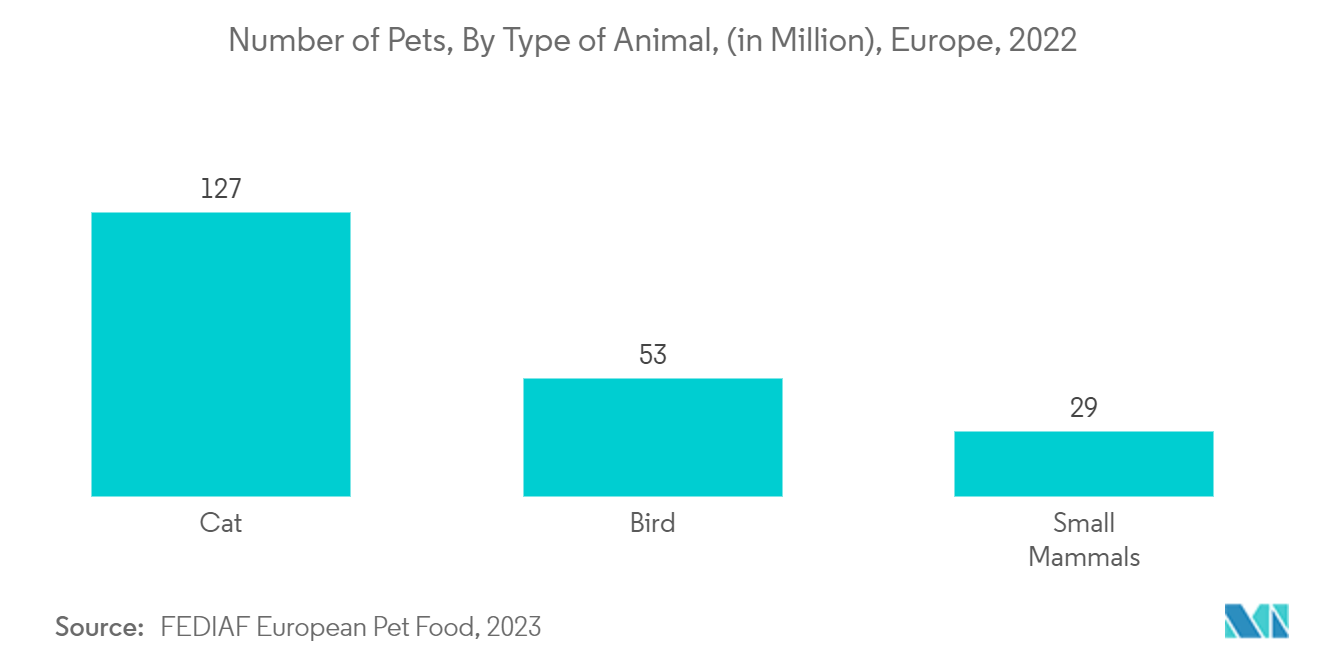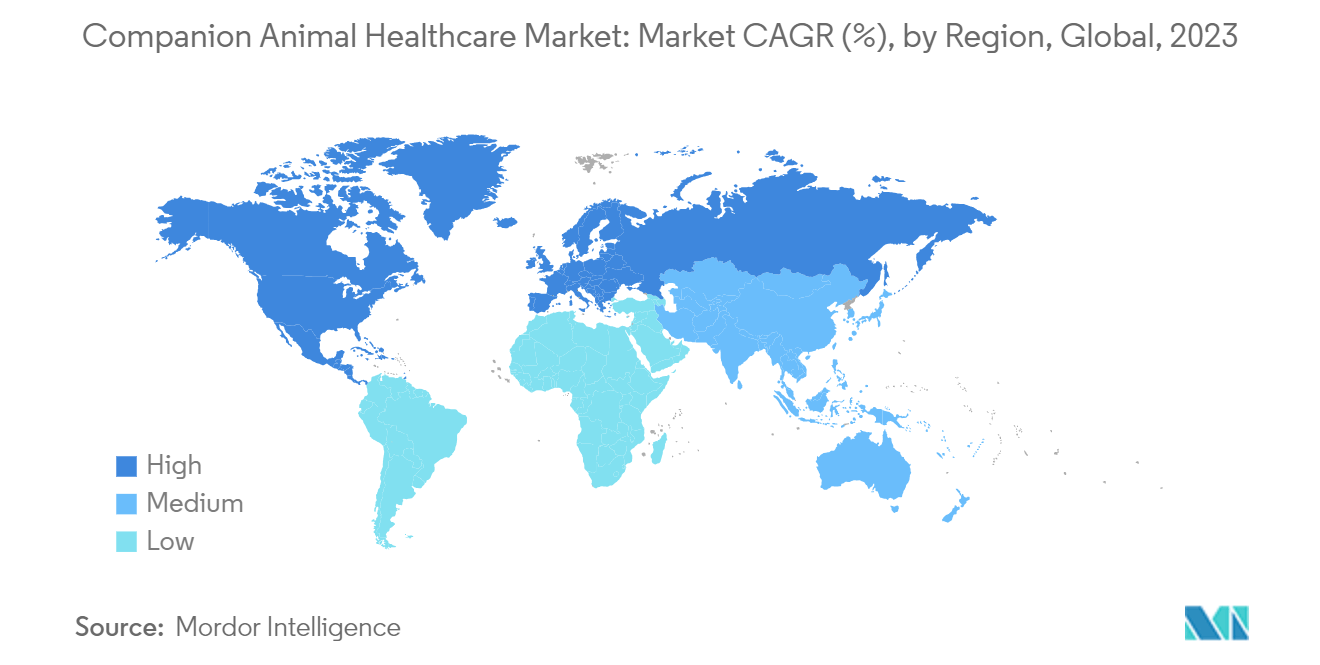Market Trends of Companion Animal Healthcare Industry
The Vaccines Segment is Expected to Witness Significant Growth Over the Forecast Period
The vaccines segment is poised for substantial growth in the companion animal healthcare market in the coming years, driven by various factors. These include the increasing prevalence of zoonotic and chronic diseases, a surge in product launches, increasing awareness of animal health, growing investments by government bodies and associations, and a rise in healthcare expenditure for companion animals.
Vaccines consist of viruses, bacteria, or other disease-causing agents that have been modified to enhance immunity without causing illness. Advanced vaccines now incorporate genetically engineered components derived from these disease agents.
The proliferation of initiatives by veterinary clinics worldwide to promote vaccination is a key driver of market growth. For example, in March 2024, Bernalillo County Animal Care Services organized a drive-thru vaccine and microchip clinic offering free services for cats and dogs. Vaccination is crucial for companion animals, not only protecting them from epidemics but also safeguarding owners in the event of animal bites.
Market players are actively developing and introducing new vaccines globally to strengthen their market presence, further bolstering segment growth. For instance, in November 2023, the Animal and Plant Health Inspection Service of the US Department of Agriculture awarded the University of Wisconsin School of Veterinary Medicine USD 3.7 million to develop vaccines targeting mitigating or preventing the impact of future disease outbreaks that can spread between animals and humans. One such project is the Universal Mucosally Administered SARS-CoV-2 vaccine for animals, which aims to identify effective interventions to prevent transmission of SARS-CoV-2 and mitigate potential impacts on the food supply.
In September 2022, Merck Animal Health donated approximately five million doses of its NOBIVAC rabies vaccine on World Rabies Day to help eliminate canine-mediated rabies. Through its Afya Program, Merck provided these vaccines to partners such as Mission Rabies and Rabies Free Africa, who administer them to dogs through mass vaccination campaigns worldwide. Such developments contribute significantly to market growth.
The vaccines segment of the companion animal healthcare market is expected to experience substantial growth during the forecast period due to the aforementioned factors.

North America Dominates the Market, and This Trend is Expected to Continue Over the Forecast Period
North America is projected to lead the companion animal healthcare market in the future, driven by several factors. These include the increasing adoption of companion animals, growing awareness among pet owners regarding pet healthcare and available services, and the presence of key market players in the region.
The growing pet population and rising expenditure on pet care are key drivers of market expansion. For example, according to Pet Ownership Statistics 2024 by Forbes Media LLC, as of 2024, 66% of US households (86.9 million homes) own a pet. Dogs are the most adopted pets in the United States., with 65.1 million households owning a dog, followed by cats (46.5 million households) and freshwater fish (11.1 million households) in 2022.
Similarly, data published by Pangolia Pte. Ltd in May 2024 indicated that nearly 8.5 million cats were owned by Canadian households, while 7.9 million dogs were owned by them in 2022. Furthermore, Canadian pet owners are willing to invest in their pets' healthcare, with an average spending of USD 2,800 on cats and USD 3,999 on dogs. The heightened awareness among pet owners regarding pet healthcare is expected to drive the demand for available products and services.
Ongoing research and development for therapeutic products and technological advancements in companion animal healthcare further contribute to market growth in the region. For instance, in May 2022, Jaguar Health Inc. launched the Canine Cancer: Take CHARGE (Canine Health And ReGistry Exchange), a national Canine Cancer Registry and Canine Cancer Care Index aimed at providing valuable incidence and prevalence data to the veterinary community and pet owners to guide canine cancer diagnosis and treatment decisions.
The companion animal healthcare market in North America is poised for growth in the forecast period, supported by the factors mentioned above.


